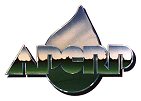Contact
Public Affairs Office
601-634-3188
 CONCORD, Mass. -- ERDC Environmental Laboratory (EL) researchers recently conducted a three-day class in the use of a low-cost, acoustic-based system for detecting and mapping submersed aquatic vegetation at the U.S. Army Corps of Engineers’ (USACE)
CONCORD, Mass. -- ERDC Environmental Laboratory (EL) researchers recently conducted a three-day class in the use of a low-cost, acoustic-based system for detecting and mapping submersed aquatic vegetation at the U.S. Army Corps of Engineers’ (USACE)
New England District (NAE) in Concord, Mass. -- The Submersed Aquatic Vegetation Early Warning System package, referred to as SAVEWS Jr., uses boat-based, commercially-available marine electronics equipment to generate signals that are processed by an ERDC-developed digital processing software package.
Twenty students participated, representing two USACE districts, U.S. Geologic Survey, National Park Service, two universities, the states of Massachusetts and New Hampshire, a private company and a non-government organization.
EL instructors included Bruce Sabol, Eddie Melton, Dr. Deborah Shafer and John Skogerboe, and from the N.H. Department of Environmental Services Richard Loyd, NAE; and Amy Smagula, also provided instruction.
Developed under sponsorship of the Corps’ Aquatic Plant Control Research Program, students will use this capability for environmental applications, including planning and monitoring aquatic plant control operations, planning and monitoring dredging operations to minimize impacts on submersed aquatic vegetation, and various studies on submersed aquatic vegetation ecology and restoration.
Learn more about the Corps’ Aquatic Plant Control Research Program at: http://el.erdc.usace.army.mil/programs.cfm?Topic=apcrp&Option=Program.